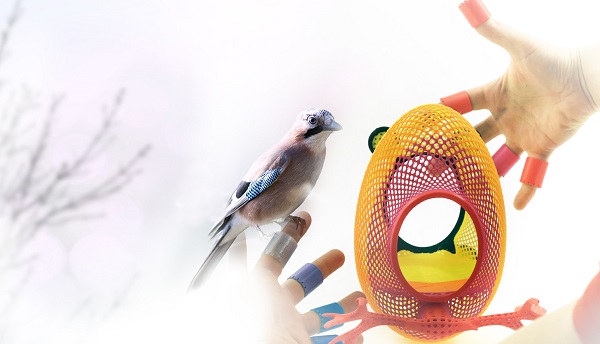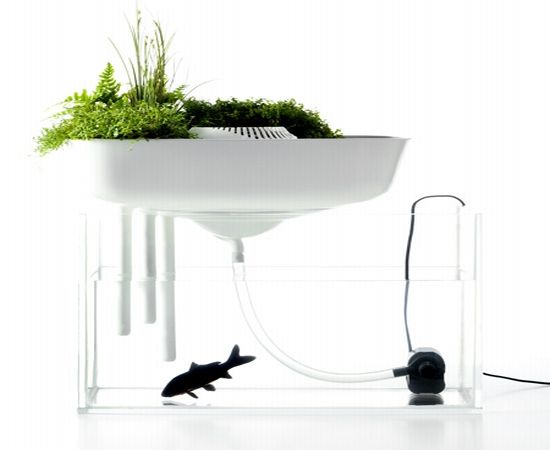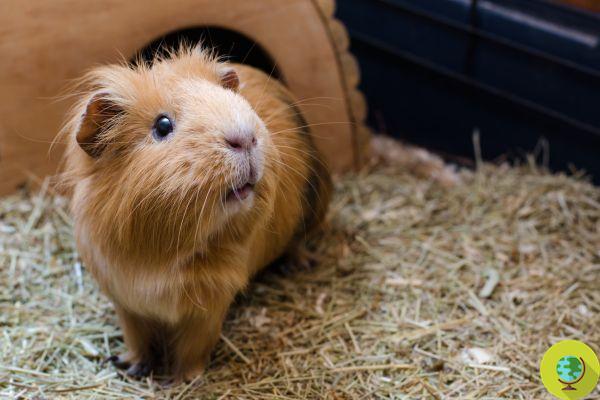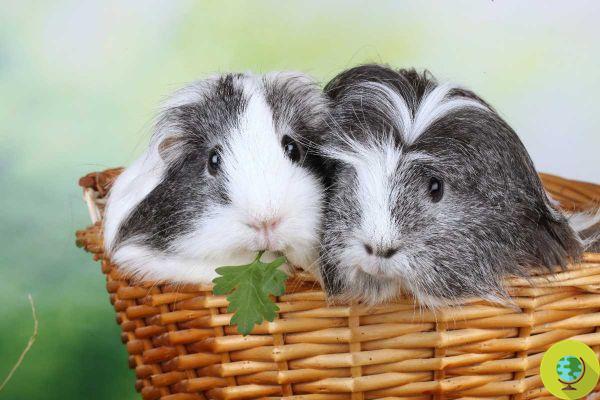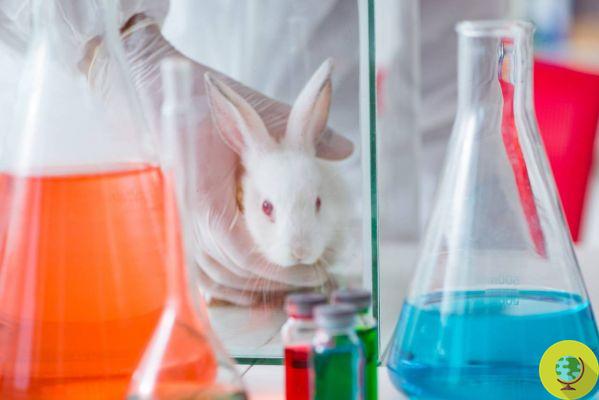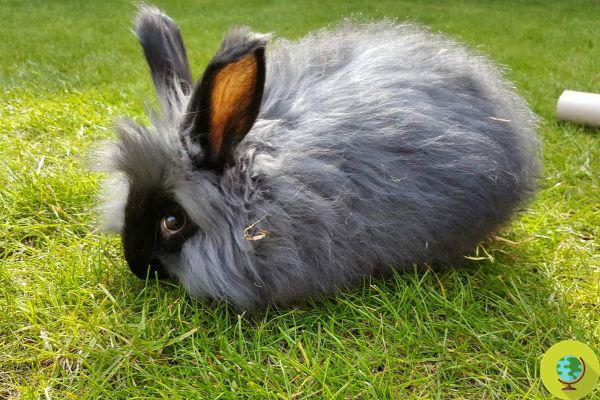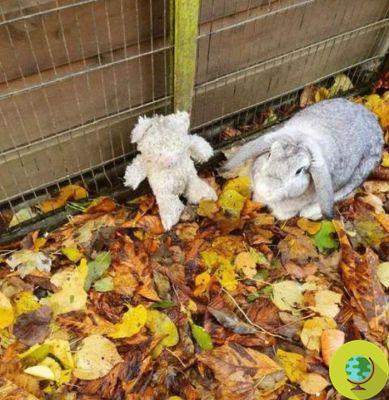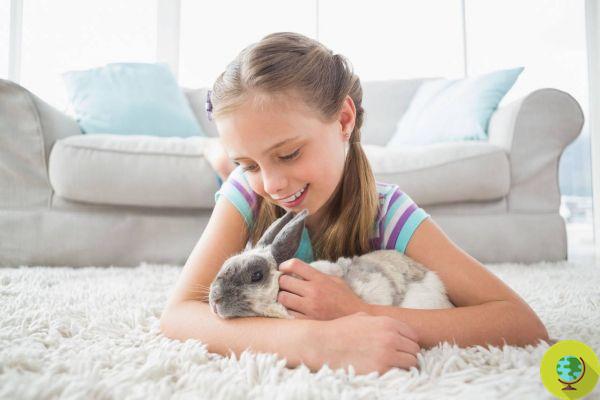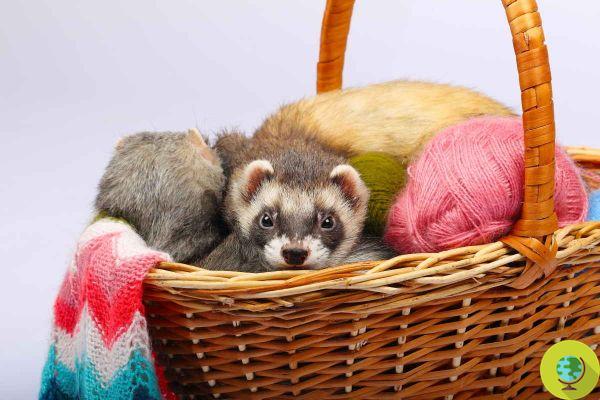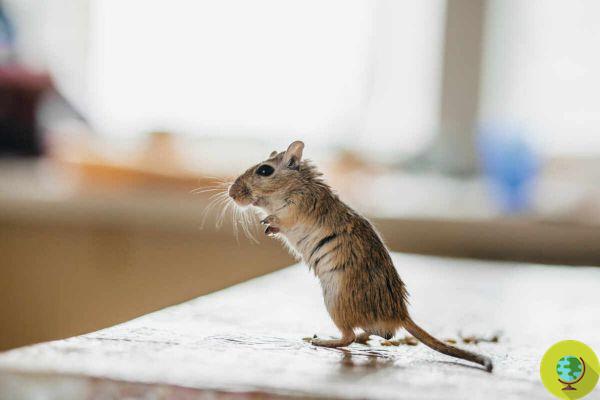 He is about to end up run over, his mother saves him
He is about to end up run over, his mother saves him
If you are thinking of adopting a gerbil (or more than one) here is all the information you need about this funny rodent
The gerbil or gerbillino is a small and nice rodent belonging to the very numerous Muridae family. That of the gerbils is actually a subfamily of which there are 16 different species that come from very far away. The gerbil is indeed native to the desert areas of Arab countries, Africa and northern China.
The gerbil is an agile and active animal, much more so than hamsters or other similar ones, and for this reason it is an excellent playmate for children, albeit of tiny dimensions.
It is still a particular rodent, so it is necessary to know the gerbil thoroughly if you want to adopt it and not make some common mistakes. Here's everything you need to know before adopting one or more.
Index
Adopt it, don't buy it
As for hamsters, rabbits, dogs, cats and other animals, gerbils can be adopted rather than bought in the store. There are many non-profit organizations and associations that take care of their management and are looking for a new family for them.
The gerbil is a very affectionate animal that will give you unconditional love. It is also easy to manage, a perfect playmate, but be careful never to take it by the tail or the hind legs which are very important for it.
He is extremely sociable
The gerbil is a very sociable rodent and loves to be surrounded by its peers, unlike hamsters for example. In nature this animal lives in groups of about 15 components with which it interacts, dividing the tasks. Living alone, as the only pet in the family, is therefore not for him.
Gerbils love company and being alone could, contrary to popular belief, cause stress, overweight, the onset of diseases in the animal and shorten its life span. If you are therefore considering getting a gerbil, it is best that you consider the hypothesis of adopt two at the same time.
It is constantly active
The gerbil is a curious rodent that gets very busy in its days. He dedicates himself to the research of materials for the construction of the dens which are real works of architecture. For this he maniacally gnaws from the first to the last branch. This activity not only keeps him busy, but allows the animal to file his teeth, keeping them short. In fact, gerbils' teeth grow continuously throughout their life.
The gerbil particularly loves to dig. The favorite dens of this rodent in nature are full of tunnels and burrows that lead to other niches that can accommodate the whole family group. The burrows of gerbils can extend for over 8 meters and can reach a depth of 170 cm.
Since the gerbil loves to gnaw, the ideal cage should not be made of wood or iron as the animal could get injured. In pet stores, there are many options designed specifically for these rodents. To make him feel at ease, don't forget to choose one that can recreate its habitat in the most likely way possible.
Dig with the hind legs
Compared to the front ones, the rear legs of the gerbil are longer because it is with these that the rodent digs its burrows, with rapid and continuous movements.
But the gerbil uses its legs for something else as well. He beats them along the walls of the burrows to warn his fellowmen of imminent danger. Males tend to beat their hind legs even after mating, thus communicating to the other gerbils that the family will expand soon.
He is not a sleeper
The gerbil, being very active as mentioned above, does not like to sleep, indeed if it were possible it would not do it at all. If during the day he devotes himself to his lair and to nibble, at night he sleeps a few hours, two or three approximately. However, this happens in wild gerbils, those raised in captivity tend to adapt to the human routine and would seem to sleep more.
He is very smart
The gerbil is a smart and cunning rodent and learns very quickly from its parents. It is the mothers, but also other females, who teach the puppies their favorite foods and where to find them, while from their fathers and other males they learn how to build burrows.
Because of its intelligence, you can teach your gerbil commands through both your voice and hand gestures. When stimulated by a rich reward, the gerbil can learn to spin around, jump on your hand, and so much more.
Love colors
Gerbils love colors and it just looks like that females would choose their mate based on the color of their coat. In fact, there are many shades that vary from gerbil to gerbil and distinguish one species from another also for hormones and differences in behavior.
He has his own way of communicating
To communicate with each other, gerbils use their sense of smell. In addition to having perfect eyesight and a highly developed hearing, even the rodent's sense of smell is no joke.
The gerbil signals its lair to others like it, using a gland in its abdomen. The same happens for the puppies that are marked by the females with their own smell in order to be able to recognize them more easily within the large family in which they live.
He always goes to the same place
A bit like cats who only use their litter box as a toilet, gerbils also have a place they choose immediately to go to the toilet.
This is always the same and is shared by all the gerbils you own. Furthermore, being animals that come from arid and desert areas, they tend to retain fluids in the body and do little pee.
Always having the same point where to go to the toilet makes it very easy to clean his house which should be done at least twice a week, always leaving some dirty shavings so that the gerbil does not get confused and immediately recognize his bathroom. The cage should still be cleaned and washed entirely at least twice a month, checking that there are no traces of soap and that everything is dry before reinserting the gerbil and its accessories.
Stocks up on food, as does the hamster
Although it does not have the famous cheek pockets that the hamster has by nature, the gerbil also exhibits similar behavior, being a serial accumulator.
He loves to make provisions, placing them in burrows for this reason its food can be prepared comfortably at home, giving your gerbil something it can keep. You can mix hamster food with parrot food, adding sunflower seeds, peanuts and fresh fruit, but don't overdo it. Gerbils also love hard-boiled eggs, as well as cheese.
In nature the gerbil takes on water through what it feeds on, but not being possible in its cage since the food that is administered to it is mainly dry, it is good to provide it with a drip tray with the water that must be changed frequently.
Despite being a fairly robust pet and not prone to many diseases, make sure you get your gerbil checked regularly by a veterinarian. Watch their behavior to keep them healthy and give them the attention and life they deserve.
Source: RSPCA
Follow us on Telegram|Instagram |Facebook |TikTok |Youtube
We also recommend:
- You may not know, but you can adopt rabbits, hamsters, and other small rodents used in experiments
- Hamster: things you absolutely need to know before adopting one
- Hamsters: 11 causes of sudden death you need to know if you adopt one (or more)
- [VIDEOTUTORIAL] Do-it-yourself hamster bed from old furniture




